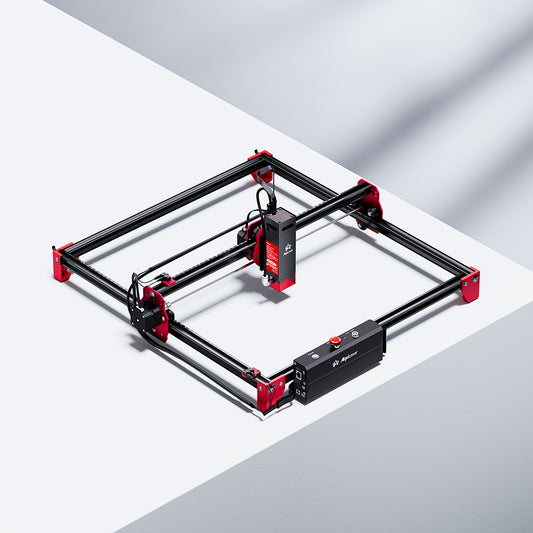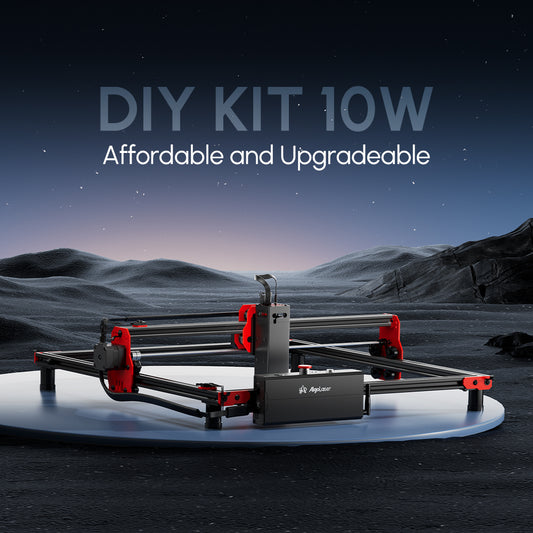How To Laser Engrave Acrylic With The Best Laser Engraver
Acrylic, a versatile and popular material, has gained significant recognition in various industries, especially in the realm of crafts and design. One of the key reasons for its popularity is its compatibility with laser technology, allowing it to be engraved, cut, and transformed into exquisite pieces of art and functional products.
One of the primary reasons for the growing popularity of acrylic engraving and cutting is the exceptional versatility and durability of acrylic materials. Acrylic sheets are available in various thicknesses and colors, allowing designers to choose the perfect canvas for their projects. Furthermore, acrylic is UV-resistant, ensuring that engraved designs remain vibrant and sharp for years, making it ideal for both indoor and outdoor applications.
In this article, we will explore a detailed explanation of how acrylic laser engraving machines work, factors to consider when purchasing an acrylic laser engraving machine, and the step-by-step instructions for making charming glass engraving works. We'll also share various glass-making craft ideas for you that may be helpful to your engraving business.
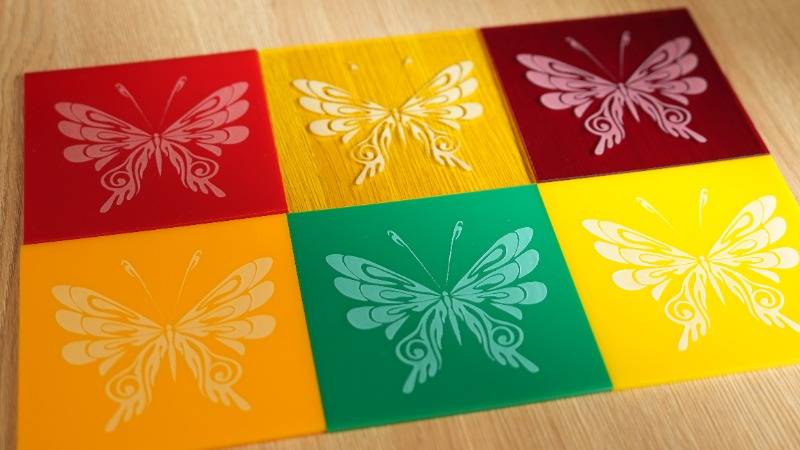
The Way of Acrylic Engraving and Cutting
There are several methods for cutting and engraving acrylic, each with its own set of advantages and applications.
1. Laser Cutting and Laser Engraving
Laser technology is employed to make precise cuts in acrylic. A high-energy laser beam rapidly heats the material, resulting in accurate cuts. Laser cutting is suitable for various acrylic thicknesses and complex shapes. Similarly, laser technology is used to create intricate patterns, text, and designs on the surface of acrylic by controlling the laser's focus and intensity.
2. CNC Cutting and Engraving
Computer Numerical Control (CNC) machines are used to cut and engrave acrylic based on pre-programmed designs. This method is ideal for projects requiring high precision and complexity.
3. Hand Tools and Blades
Traditional hand tools, such as saws, planes, carving knives, and cutting tools, can be employed for cutting and engraving acrylic. This approach demands skill and patience and is typically used for smaller-scale projects, arts, and crafts.
4. Hot Wire Cutting
Hot wire cutting involves passing a heated wire or filament through the acrylic to achieve cutting. This technique is useful for cutting thicker acrylic or creating curved shapes.
5. Etching
Etching involves the removal of acrylic surface material using chemical etching or etching acids to create patterns or text. It's often used to achieve deep engraving effects.
6. Sandblasting
Sandblasting is a method where high-speed airflow propels abrasive particles onto the acrylic surface to create a frosted effect or deep engraving.
7. Mold Making
Creating molds and placing acrylic within them, followed by applying heat or pressure, is used to achieve specific shapes or textures.
8. Heat Knife
A heat knife involves using a heated blade to melt acrylic for cutting or engraving. This can be used to create specific shapes or imprints.
9. Shearing
Specialized acrylic cutting tools, such as acrylic shearing machines, are used to cut acrylic sheets.
10. Printing
Printing images, designs, or text on the surface of acrylic, followed by post-processing to fix the printing effect.
Each method has its own set of advantages and is suitable for specific applications. The choice of technique depends on project requirements, material thickness, design complexity, and the equipment and skill level available.
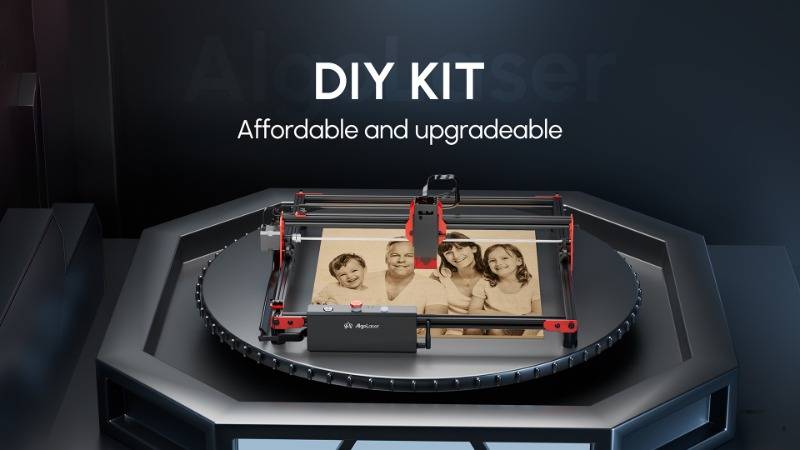
Differences Between Acrylic in Laser Engraving and Others
Precision and Detail
One of the most significant differences between laser engraving and traditional methods is precision. Laser technology offers outstanding accuracy, allowing for intricate and detailed designs. With a laser, you can create complex patterns, fine lines, and sharp text that are often challenging to achieve using traditional methods.
Traditional methods, on the other hand, rely on manual techniques such as routing, carving, or sandblasting. While skilled artisans can produce high-quality work, the precision and level of detail may not match what laser technology can achieve.
Speed and Efficiency
Laser engraving and cutting are known for their speed and efficiency. Laser systems can complete complex tasks in seconds, making them highly efficient for mass production. Traditional methods, which may involve manual labor, could be more time-consuming and labor-intensive.
Automation and Consistency
Laser systems are computer-controlled, offering automation and consistency in the engraving and cutting process. This means that you can achieve the same results repeatedly across different projects. In contrast, traditional methods require a high level of craftsmanship, which can lead to variations in the final product.
Flexibility
Laser technology provides remarkable flexibility. By adjusting parameters, you can achieve various engraving and cutting effects on the same acrylic sheet. Traditional methods typically require different tools and techniques for different effects, making them less flexible.
Non-Contact Processing
Laser engraving and cutting are non-contact processes. The laser beam does not physically touch the acrylic surface, leaving no physical marks or scratches. Traditional methods, which often involve tools in direct contact with the material, may cause scuffs or damage.
Complexity
Laser systems can handle highly complex designs and patterns, including tiny details and intricate geometries. Traditional methods may struggle to replicate such high levels of complexity.
Material Waste
Traditional methods can generate more material waste as they involve physical cutting and removal of material. Laser systems can minimize waste, as they achieve precise cuts and engravings with minimal excess material.
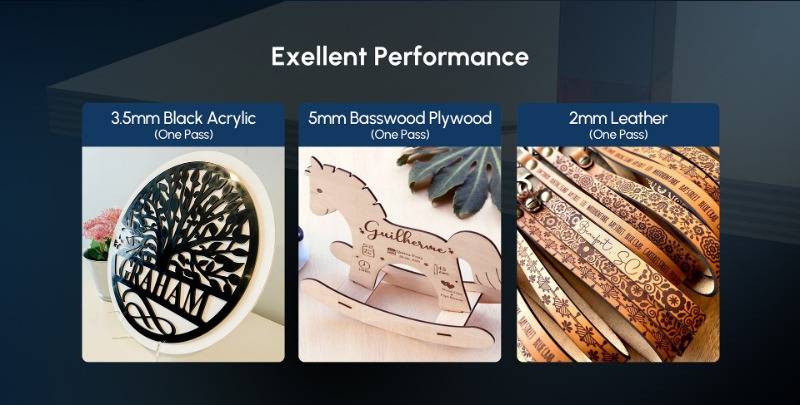
Understanding Acrylic Laser Engraving Machines
Acrylic laser engraving machines have become essential tools in the world of crafting, manufacturing, and design. They enable the precise etching and cutting of acrylic sheets, opening the door to countless creative possibilities. In this part, we'll provide a detailed explanation of how acrylic laser engraving and cutting machines work, as well as an overview of the different types of lasers suitable for acrylic.
How Acrylic Laser Engraving and Cutting Machines Work
Acrylic laser engraving and cutting machines employ the principles of laser technology to transform acrylic sheets into intricate designs and precisely cut shapes. The process involves the following key steps:
1. Laser Generation: The machine contains a laser source, which can be a CO2 laser, a fiber laser, or a diode laser. This laser emits a high-intensity beam of light.
2. Focusing Optics: The emitted laser beam is then directed through a series of focusing optics that concentrate the light into a small, powerful point.
3. Material Interaction: The focused laser beam is directed onto the surface of the acrylic sheet. The intense heat generated by the laser vaporizes or melts the acrylic material, resulting in engraving or cutting, depending on the design and settings. Another thing to note is that the darker the color of the acrylic, the better the engraving effect.
4. Computer Control: Acrylic laser engraving machines are controlled by specialized software that interprets design files and precisely guides the laser's movements. This computer control ensures accuracy and repeatability in the engraving and cutting process.
5. Extraction and Cooling: To prevent overheating and remove any fumes or debris generated during the process, a ventilation system and cooling apparatus are often integrated into the machine.
Different Types of Lasers Suitable for Acrylic
CO2 Lasers: CO2 lasers are one of the most common types used for acrylic engraving and cutting. They generate a beam of infrared light, highly effective at vaporizing and cutting acrylic. These lasers offer versatility and can be finely tuned for different acrylic thicknesses and designs.
Fiber Lasers: Fiber lasers are known for their precision and speed. They work well for marking acrylic surfaces, creating clear and detailed engravings, and achieving high-resolution results.
Diode Lasers: Diode lasers are compact and cost-effective. While not as powerful as CO2 or fiber lasers, they can still produce quality engravings on acrylic, making them suitable for smaller-scale projects and hobbyists.

Choosing the Best Acrylic Laser Engraving Machines
Acrylic laser engraving machines have revolutionized the world of crafting, personalization, and industrial production. Whether you're an artist, entrepreneur, or hobbyist, investing in the right acrylic laser engraving machine can elevate your creative capabilities. In this buying guide, we'll explore the key factors to consider when purchasing an acrylic laser engraving machine, as well as provide a brief review of some top machines in the market.
Factors to Consider:
·Laser Type: Acrylic laser engraving machines use various laser types, including CO2, fiber, and diode lasers. CO2 lasers are versatile and work well for most acrylic applications. Fiber lasers offer precision, while diode lasers are suitable for smaller-scale projects.
· Laser Power: The laser's power determines the depth and speed of engraving or cutting. Consider the thickness of the acrylic material you plan to work with and choose a machine with adequate power.
· Workspace Size: Evaluate the machine's bed size to ensure it accommodates your project needs. A larger workspace allows for engraving or cutting larger acrylic sheets.
· Precision and Speed: Look for a machine that offers high precision and speed. This is crucial for intricate designs and efficient production.
· Software Compatibility: Ensure the machine is compatible with the design software you intend to use. User-friendly software makes the engraving process more convenient.
· Cooling and Ventilation: Proper cooling and ventilation systems are essential to prevent overheating and ensure a safe working environment.
· Build Quality: Machines constructed from durable materials tend to last longer. Check the build quality and the reputation of the manufacturer.
When selecting an acrylic laser engraving machine, weigh these factors according to your specific needs and budget. The right machine can open up a world of creative possibilities, from personalized gifts to intricate designs and industrial production.
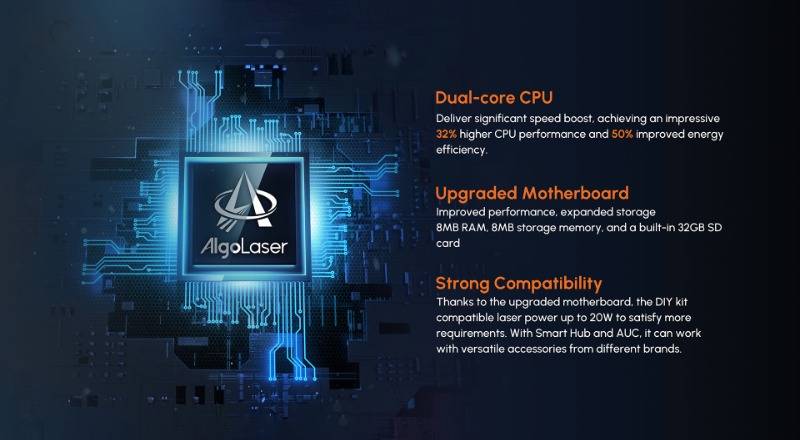
The Process of Laser Engraving on Acrylic
Laser engraving acrylic is an intricate process that demands precision and attention to detail. In this comprehensive walkthrough, we'll guide you through the step-by-step process of laser engraving on acrylic, including how to monitor the process, adjust settings if needed, and examine the final results.
Step 1: Prepare Your Design
Begin by preparing the design you want to engrave on the acrylic. Ensure that your design is compatible with your machine's software and that it fits within the acrylic's dimensions.
Step 2: Secure the Acrylic
Place the acrylic sheet on the machine bed, securing it in place to prevent any movement during the engraving process. You can use masking tape, clips, or other non-marking methods to ensure the acrylic remains flat and steady.
Step 3: Set Laser Parameters
Adjust the laser parameters, including power, speed, and resolution, to match your specific project. The appropriate settings depend on the acrylic thickness and the depth of engraving you desire. Consult the manufacturer's recommendations or your own experience to find the optimal parameters.
Step 4: Focus the Laser
Accurate focus is crucial for a successful engraving. Use the machine's focus adjustment feature to set the correct distance between the laser head and the acrylic surface. This ensures that the laser's focal point is sharp and precise.
Step 5: Start the Engraving
Initiate the engraving process using your machine's software. The laser will follow the design you've prepared, tracing the path with the designated settings. During this phase, monitor the machine to ensure everything runs smoothly.
Step 6: Monitor and Adjust
Keep a watchful eye on the engraving process. Check for any signs of overheating or issues with the engraving quality. If you notice any problems, be prepared to pause or stop the machine and make necessary adjustments to the settings or the acrylic's positioning.
Step 7: Examination and Troubleshooting
Once the engraving is complete, carefully remove the acrylic from the machine bed. Examine the results under proper lighting to assess the engraving's quality. If you encounter any irregularities, such as incomplete engraving or burnt edges, consider the following troubleshooting steps:
· Check the laser's cleanliness and alignment.
· Verify the laser parameters for inconsistencies.
· Ensure the acrylic sheet is free from debris or dirt.
· Adjust the focus or the distance between the laser head and the acrylic surface.
By following these steps, you can achieve precise and detailed engravings on acrylic. The key is to maintain vigilance throughout the process, make necessary adjustments as needed, and perform post-engraving quality checks. Over time, with experience and practice, you'll master the art of laser engraving on acrylic, unlocking endless creative possibilities.
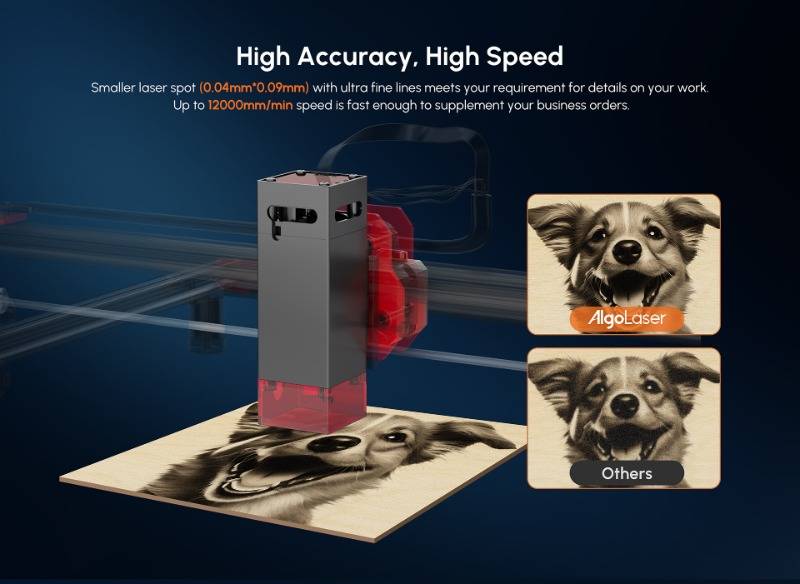
Popular Acrylic Laser Engraving Projects and Ideas
Acrylic laser engraving and cutting offer a wide range of creative possibilities, from personalized gifts to intricate designs and functional items. Here are some popular project ideas to inspire your next acrylic laser crafting endeavor:
1. Personalized Signs and Plaques
Create custom signs for businesses, events, or homes. Engrave names, logos, or messages on acrylic to add a personal touch.
2. Personalized Jewelry
Design and cut acrylic jewelry, such as necklaces, earrings, or bracelets, with intricate patterns or monograms.
3. Home Decor
Laser-cut decorative elements like lampshades, coasters, wall art, or acrylic plant holders enhance your home's aesthetic.
4. Wedding Decor and Favors
Create custom wedding invitations, table centerpieces, cake toppers, and favors to add a personal touch to your special day.
5. Customized Electronics Cases
Design and engrave unique phone cases, laptop covers, or tablet stands for a personalized tech accessory.
6. Architectural Models
Craft detailed architectural models for presentations, design prototypes, or hobbyist displays.
7. Acrylic Stamps
Make custom rubber stamps for artistic projects, scrapbooking, or business branding.
8. Promotional Items
Design and produce promotional products such as keychains, magnets, or bookmarks for marketing campaigns or events.
9. Educational Aids
Create teaching aids, puzzles, and visual aids for educational purposes, making learning engaging and interactive.
10. Mechanical Parts Prototyping
Produce precise mechanical parts, gears, or prototypes for engineering or DIY projects.
11. Artistic Sculptures
Craft intricate acrylic sculptures or art pieces that play with light and shadows to create stunning visual effects.
12. Themed Gaming Accessories
Customize board game pieces, dice, or miniatures to enhance tabletop gaming experiences.
13. Acrylic Displays
Design and cut acrylic displays for retail or exhibition purposes to showcase products, collectibles, or artwork.
14. Holiday Decorations
Craft personalized ornaments, holiday-themed decorations, or greeting cards to celebrate festive seasons.
15. Cosplay Accessories
Design and cut intricate accessories, masks, or emblems for cosplay costumes and conventions.
These project ideas represent just a fraction of the creative possibilities that acrylic laser engraving and cutting offers. Whether you're an artist, entrepreneur, or hobbyist, these techniques enable you to turn your creative vision into reality. Experiment, explore, and let your imagination run wild with acrylic crafting projects, and create profit for your business.
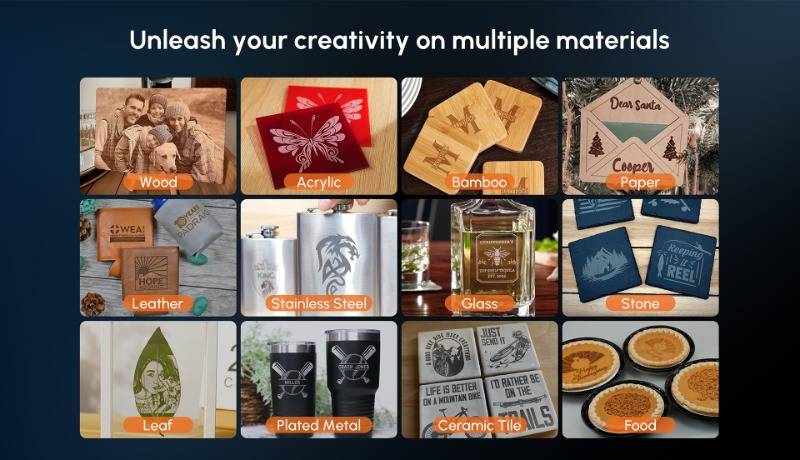
Conclusion
In the realm of acrylic laser engraving and cutting, we've embarked on a journey through a world of endless possibilities and creativity. The capacity to transform plain acrylic into intricate, personalized, and functional pieces is nothing short of extraordinary.
As we conclude this exploration, we encourage you to unleash your imagination and dive into the fascinating universe of acrylic laser engraving and cutting. It's a world where your ideas come to life with precision and artistry. From personalized gifts and home decor to intricate jewelry and prototypes, your creativity knows no bounds.
With the right machine, a dash of inspiration, and a sprinkle of patience, you can craft beautiful, one-of-a-kind pieces that leave a lasting impression. So, experiment, learn, and embrace the joy of creating with acrylic and laser technology. Your artistic journey awaits, and the possibilities are as limitless as your imagination.
Start now, and let your creations shine!
Free SVG & Gcode Files for Laser Engraving & Cutting can be found here, wich you can import into our laser cutters directly.



